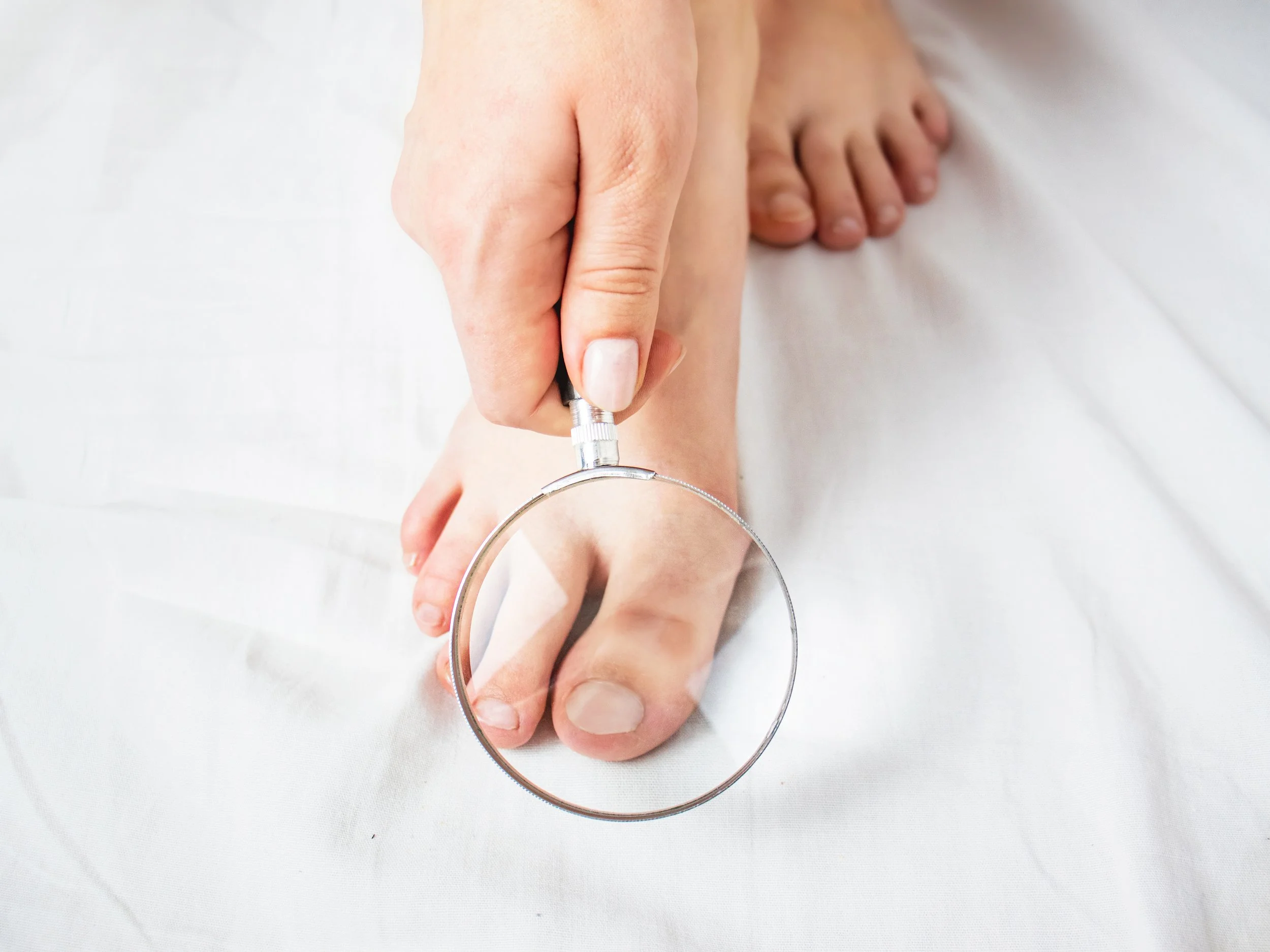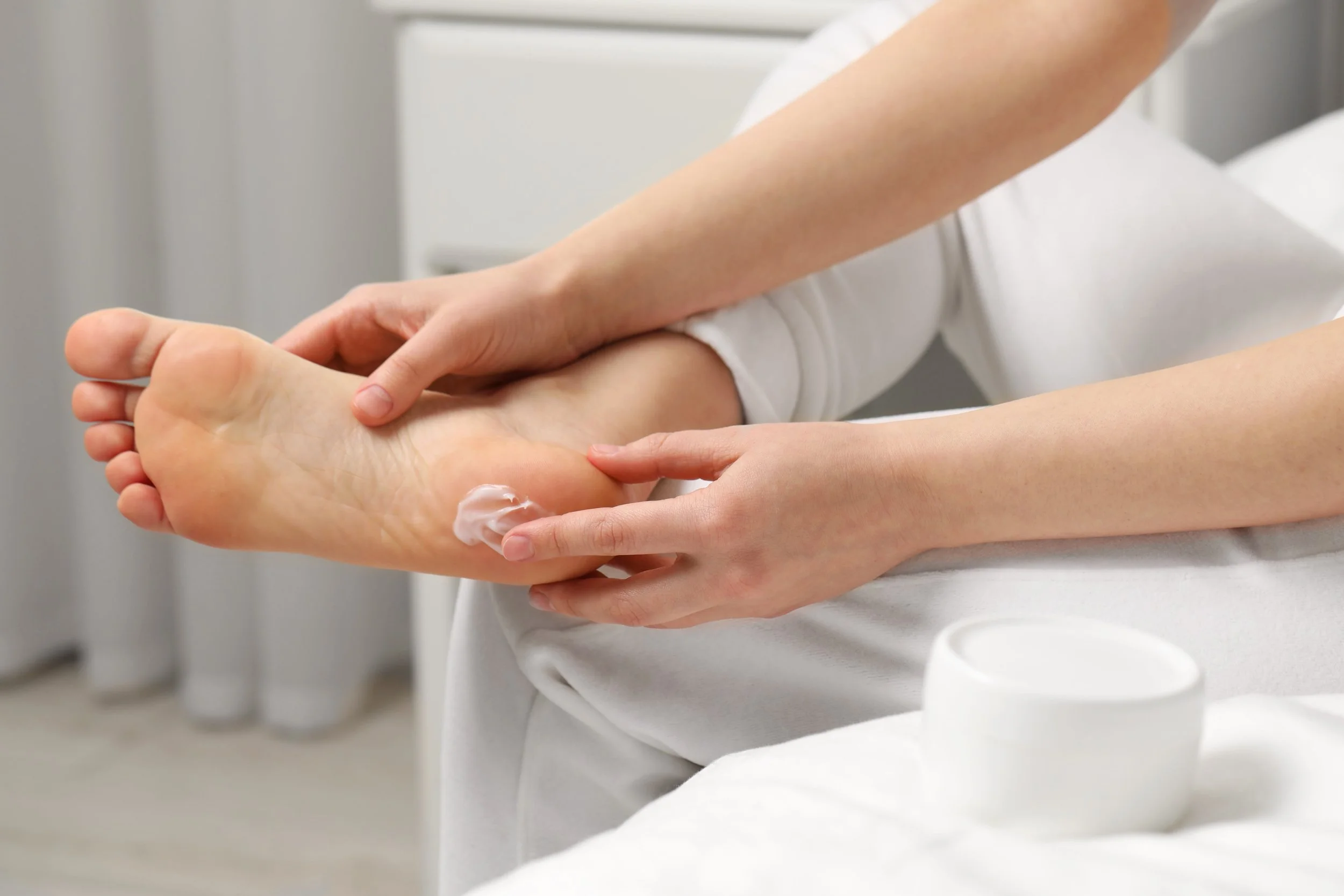Q&A with our podiatrist Morgan Stranger
Ingrown toenails are one of the main conditions we see and treat in our clinic.
Today I’d like to address some of the most common questions we are asked when people present to our clinic with a sore toenail.
What is an ingrown toenaiL?
An ingrown toenail occurs when the nail edge grows into (penetrates) the surrounding skin. The medical name for an ingrown toenail is “onychocryptosis”.
An ingrown toenail is often very painful. Other symptoms can include inflammation, swelling, redness and pus. Some ingrown toenails will also develop "proud flesh", known as hypergranulation tissue.
Ingrown toenails most commonly affect the big toenail but can occur in any nail (on both your fingers and toes!).
Other conditions such as thickened toenails, involuted or "curly" nail edges, or corns/callus along the side of the nail can cause pain like an ingrown toenail. In these cases, the nail may not actually ingrown. Your podiatrist will be able to diagnose your nail condition correctly.
What causes an ingrown toenail?
Several different causes might lead to the development of an ingrown toenail. These include:
Traumatic injuries: include stubbing your toe, dropping things on your foot, or accidentally catching and ripping the nail.
Picking or pulling your toenails: can create sharp edges or tear skin surrounding the nail.
Improper cutting techniques: cutting down the edge of the nail is more likely to cause an ingrown toenail than cutting nails straight across.
The shape of your nail plate: wider nail plates are more at risk of becoming ingrown.
Thickened or incurvated nails: tend to curve into the skin, making nail management difficult and increasing the risk of an ingrown nail.
Toes that sit too close together: can put pressure on the adjacent toenails.
Ill-fitting shoes: that are too small or tight across the toes will put pressure on the nail plate and can lead to an ingrown toenail.
Some sports or activities: can increase pressure on the toenails (cricket and tennis are two, to name a few). Also, as feet get sweaty, the skin around the nails becomes softer and more prone to nail penetration.
I think I have an ingrown toenail, what should I do?
Book to see your podiatrist ASAP as a piece of the nail may need to be removed.
Please DO NOT attempt to remove any nail yourself at home as it might exacerbate the problem.
If your toe shows any signs of infection, apply an antiseptic (such as betadine) and a sterile dressing (such as a large hypoallergenic bandaid). You will need to see your GP for antibiotics if the infection is severe.
Wear comfortable shoes that don't increase pressure on the affected toe.
How can a podiatrist help?
Your podiatrist will assess your toe and, in consultation with you, decide upon the best treatment for your individual case.
Preventative management:
Podiatrists can offer quick and easy solutions such as nail cutting education, routine podiatric nail care and/or footwear assessment to help reduce your risk of developing an ingrown toenail.
Conservative treatment:
Your podiatrist may be able to carefully remove the offending nail spike in a non-invasive manner.
The Onyfix Nail Correction System - available through Blackwood Podiatry - is a painless treatment for involuted and/or ingrown toenails. Please discuss with your podiatrist if this treatment is suitable for you.
Surgical treatment:
Non-permanent or permanent surgical management of the affected nail edge can be an ideal long-term option, especially for those with recurrent ingrown toenails.








